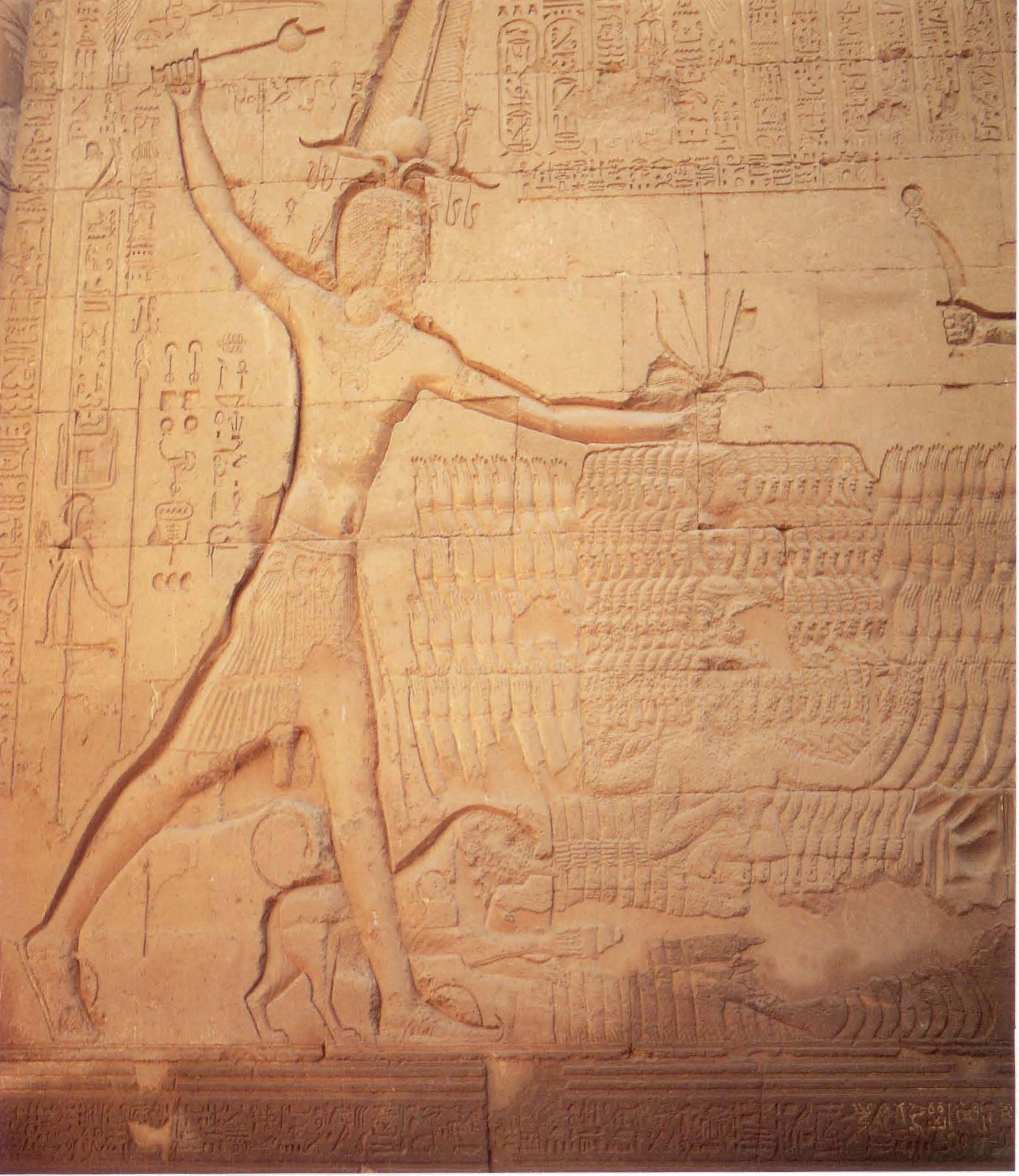Relief of Trajan
The Emperor Trajan followed by his ka (life energy), smiting enemies, in the temple of the god of Khnum at Esna
c. 115 CE Sunk relief in sandstone
The rule of the last Egyptian pharaoh, Nectanebo II, came to an end in 342 BCE under the onslaught of the Persians. In 332 BCE Alexander the Great conquered Egypt and his successors, the Ptolemies, ruled over Egypt until the last of them, Queen Cleopatra VII, committed suicide in 30 BCE and Egypt became a province of the Roman Empire. Although foreigners were at the helm of the country, Egyptian temples continued to be built; the priesthood had to be pacified, and rulers of foreign extraction were keen to be seen as continuing in the footsteps of the pharaohs. Paradoxically, the best preserved Egyptian temples date from the Ptolemaic and Roman periods. They are the most recent erected and so they did not suffer from later building activities. Furthermore, Upper Egypt where most of the surviving temples are situated saw relatively little Islamic building activity and so they, unlike their counterparts in the Delta and the Memphite area, were not pulled down and reused in medieval buildings. Ptolemaic rulers and Roman emperors, including some who never set foot in Egypt, had themselves represented as pharaohs. In the scene illustrated here, the Emperor Trajan smites enemies of the northern exterior wall of the hypostyle hall at Esna.
Malek, Jaromir, Egypt; 4000 years of Art. London- Phaidon Press, 2003.
See also-
